
|
|
SUBSIM: The Web's #1 resource for all submarine & naval simulations since 1997
 |
SUBSIM: The Web's #1 resource for all submarine & naval simulations since 1997 |
 05-03-15, 10:21 AM
05-03-15, 10:21 AM
|
#1 |
|
Lucky Jack
 |
 THE AMERICAN CIVIL WAR Preface: What the hell? A Brit doing a US Civil War AAR...and playing as the Confederacy? This can only lead to disaster! Probably...yes...but I figure it will be an interesting disaster to play through, as well as trying to broaden my knowledge of the events of the civil war in the meantime. How much this AAR will be updated is open to question, but I'll do what I can. I'm using Victoria II: Heart of Darkness with the Pops Demand Mod and Divide By Zero sub-mod. I'm using the 'A House Divided' start date of 1861, so events up until this point are as history played out...beyond this point...who can say? |

|

|
 05-03-15, 11:12 AM
05-03-15, 11:12 AM
|
#2 |
|
Lucky Jack
 |
The events which would lead to the succession of the six states and the beginning of the American Civil War took place long before the first shots were fired at Fort Sumter, or the adoption of the "Declaration of the Immediate Causes Which Induce and Justify the Secession of South Carolina from the Federal Union", in fact, one could argue that it was set in place from the moment the Thirteen Colonies broke free from their British tyrants.
Long has been debated the blame for the war, and long shall it continued to be debated. This is not a history of the causes, or of the moral justification of the actors involved in the Civil war, but an examination of the events therein. 1st July 1861  The ratio of land is not stacked in the favour of the Confederacy, however much of the land in the west of the Union is undeveloped farm land, the key industrial centers of the Union lie in the east, and it is expected that this is where the most Union resistance will lie. To attain our goals we must prevent the Union from shattering our armies and from taking our territories. This will not be easy, and will require superhuman effort from all involved.  Our three generals, J.E.B. Stuart, Robert. E. Lee, and Thomas Jackson, lead their forces in the east, with Lee holding with Army of North Virginia near Manassas, facing the Army of the Potomac and the Army of the James River across the state border, lead by Generals Grant and Sherman respectively. Our armies are formed of regular soldiers, dragoons and artillery, and our technology is equal to that of the Union. Our biggest problem is our economy, with General Scotts blockade snaking its way around the east coast and no access to the west coast, there is no way to export our main industry of cotton to Europe. This is a problem that will need to be solved, however our navy consists of the CSS Sumter, Alabama and Florida, small commerce raiding vessels.  The CSS Florida, prior to the outbreak of war. So, the first actions of the Confederate government is to send diplomats to the nation with the largest navy in the world, Great Britain, to improve our relations with an eventual goal to bring them into the war on our side. Great Britain and Europe depend heavily on our cotton, so a subtle diplomatic indication of the effect the war will have on cotton supplies should help bring them to our side and away from the aggressors in the Union. At the same time, our army will require reorganisation and improvements to match the Union forces, and our navy will require...creation. The decision is made not to challenge Sherman and Grant in Northern Virginia, but to pull back to Southern Virginia and form a defensive line with reinforcements from the west. At the same time, a call will go out for citizens to join up to the army of the Confederacy and receive training in order to face the Union forces. 
|

|

|
 05-03-15, 11:36 AM
05-03-15, 11:36 AM
|
#3 | |
|
Gefallen Engel U-666
|
Quote:
Following this compromise, another controversy erupted: What should be done about the slave trade, the importing of new slaves into the United States? Ten states had already outlawed it. Many delegates heatedly denounced it. But the three states that allowed it — Georgia and the two Carolinas — threatened to leave the convention if the trade were banned. A special committee worked out another compromise: Congress would have the power to ban the slave trade, but not until 1800. The convention voted to extend the date to 1808. A final major issue involving slavery confronted the delegates. Southern states wanted other states to return escaped slaves. The Articles of Confederation had not guaranteed this. But when Congress adopted the Northwest Ordinance, it a clause promising that slaves who escaped to the Northwest Territories would be returned to their owners. The delegates placed a similar fugitive slave clause in the Constitution. This was part of a deal with New England states. In exchange for the fugitive slave clause, the New England states got concessions on shipping and trade." Time bomb ticking...  no "freedom for all" political theory ever works with 3/5 of a person IMHO no "freedom for all" political theory ever works with 3/5 of a person IMHO A revisit of the Haitian overthrow of Napoleon and our acquisition of the Louisiana Purchase is practically a blueprint of the coming conflagration. A revisit of the Haitian overthrow of Napoleon and our acquisition of the Louisiana Purchase is practically a blueprint of the coming conflagration.
__________________
"Only two things are infinite; The Universe and human squirrelyness?!! |
|

|

|
 05-03-15, 12:36 PM
05-03-15, 12:36 PM
|
#4 |
|
Lucky Jack
 |
First Blood
September 1861  Having declined to challenge Sherman and Grant at Staunton and Fredericksburg, the first clash between the North and the South since the shots that were fired at Fort Sumter came at the beginning of September when Grants forces marched on the port city of Norfolk, Virginia. Having been drawn west by Shermans feint towards Roanoke, Lee and Stuart found themselves out of position and forced to march quickly back east to challenge Grant. Meanwhile Jackson pushed north to occupy the gap left by Grant and Sherman who had occupied Staunton, in a hope to retake it before the Union forces reorganised and moved to exploit the gap in the Confederacies lines.  The Battle of Norfolk The battle commenced on the morning of September 7th 1861 with Lee's artillery firing across the James river at Grants infantry who had taken up positions in defence of Newport News. Whilst Lee had the advantage in manpower, Grant had the advantage of terrain, and the Confederate forces would have to ford the James river before they could close on Grants positions and by then Grant would have his cavalry waiting. Confident at first, Lees forces pushed forward across the James river, and created a beach-head on the other side, supported by their artillery.  Lees infantry and artillery crossing the James river However, at this point Grants cavalry struck, small in number though they were, they were quick to harrass the small and fragile beach-head, and by the 20th September the tide was turning in favour of Grant. Lee sent a messanger across to Staunton to request Jacksons attendence at the battle, but it would take eight days before Jacksons 23,000 men and 8,000 cavalry could march through Richmond and into Newport News. Could Lee maintain the offensive that long?  As we now know, the answer is Yes. On the 23rd September in the late afternoon, Grants cavalry came again but this time Lees artillery was waiting for them. In a scene that reminded some of the British Charge of the Light Brigade, Grants cavalry ran straight into a hail of fire, General Pleasonton, leader of the cavalry was killed outright and the cavalry scattered in disarray. Seeing the opportunity and even with his right flank collapsing, Lee pushed his infantry forward under artillery cover and routed Grants infantry from its defensive positions around Newport News.  A message was immediately dispatched to Jackson to change course to Fredericksburg, to attempt to cut off Grants retreat and reduce the Union Army of the Potomac even further. Meanwhile Lee and his forces regrouped, it was a stunning victory and a display of Lees tactical acumen to bring a victory out of a near defeat. The news of the defeat of Union forces sent a mild shockwave around the world as national leaders suddenly sat up and realised that the Confederacy was no rabble milita and was in fact a force to be reckoned with. Confederate newspapers heralded the triumph as a sign of Gods backing in their war against the tyranny of the North, however both Generals Lee and Stuart looked at the dead and dying on the battlefield of Newport News and knew that this victory was a near pyrrhic one. The sheer number of men lost, on both sides, gave the first indication that this was going to be a long and bloody war, and the South did not necessarily have the manpower to sustain these kinds of losses for long.  The aftermath of the battle of Norfolk |

|

|
 05-03-15, 12:46 PM
05-03-15, 12:46 PM
|
#5 | |
|
Let's Sink Sumptin' !
|
Quote:
In the meantime, enjoy your Southern Comfort women.  Subscribed. 
|
|

|

|
 05-03-15, 01:28 PM
05-03-15, 01:28 PM
|
#6 |
|
Gefallen Engel U-666
|
 <Those are dead at Gettysburg: Alexander Gardiner's Confederates at MacPherson Ridge killed on the first day at Gettysburg-gathered. http://www.civilwarphotos.net/files/gettysburg.htm #549 Some chicanery and 'staging was known to have occurred due to heaviness of camera equipment and swift glass-plate developing in the camera-wagon on field. As possibly shown (upper left) in the Wheatfield shot #550. <Those are dead at Gettysburg: Alexander Gardiner's Confederates at MacPherson Ridge killed on the first day at Gettysburg-gathered. http://www.civilwarphotos.net/files/gettysburg.htm #549 Some chicanery and 'staging was known to have occurred due to heaviness of camera equipment and swift glass-plate developing in the camera-wagon on field. As possibly shown (upper left) in the Wheatfield shot #550. 
__________________
"Only two things are infinite; The Universe and human squirrelyness?!! Last edited by Aktungbby; 05-03-15 at 01:36 PM. |

|

|
 05-03-15, 01:57 PM
05-03-15, 01:57 PM
|
#7 |
|
Gefallen Engel U-666
|
@ Oberon: Never mind Torplexed
 on Southern Comfort ...just enjoy your Mercedes Benz "Amends" while your friends are drivin' Porsche's on Southern Comfort ...just enjoy your Mercedes Benz "Amends" while your friends are drivin' Porsche's  A little Texican Southern Comfort BBY A little Texican Southern Comfort BBY

__________________
"Only two things are infinite; The Universe and human squirrelyness?!! |

|

|
 05-05-15, 08:01 PM
05-05-15, 08:01 PM
|
#8 |
|
Lucky Jack
 |
(Thanks for subbing Torplexed, and I love the pic.
 Unfortunately, due to Union forces sabotaging my GPU the next update will be a little later than I initially planned, but hopefully I should be able to write one up whilst waiting for our own Union to disintegrate on Friday. Unfortunately, due to Union forces sabotaging my GPU the next update will be a little later than I initially planned, but hopefully I should be able to write one up whilst waiting for our own Union to disintegrate on Friday.  Depends on how quickly the thermal paste I've ordered arrives. Depends on how quickly the thermal paste I've ordered arrives.  ) )
|

|

|
 05-06-15, 01:59 PM
05-06-15, 01:59 PM
|
#9 |
|
Navy Seal
 |
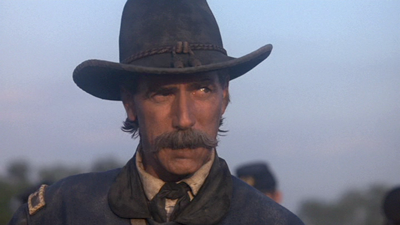 We will charge valiantly... and be butchered valiantly! And afterwards men in tall hats and gold watch fobs will thump their chest and say what a brave charge it was. ~ General Buford |

|

|
 05-07-15, 06:00 PM
05-07-15, 06:00 PM
|
#10 |
|
Lucky Jack
 |
(Sam Elliot ftw!!)
Blood and Cotton October - November 1861 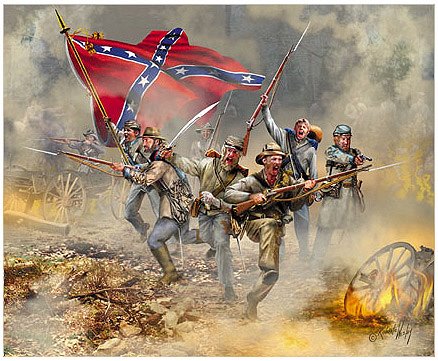 "The last charge of the 39th Arkansa infantry regiment."  Whilst the Confederate newspapers cheered the victory at Newport News, a disaster was taking place on the other side of Confederate territory. General Sherman had disappeared from the frontlines around Virginia, but then General Sheriden suddenly appeared in Arkansas, ambushing a small army lead by Brigadier-General Sterling Price who was forced to flee for his life as his entire army was massacred by a combined artillery and infantry assault by Union forces.  However, the importance of that battle, or rather massacre, was undermined by another battle raging back east at Fredericksburg, as Jackson pinned down Grants army, giving time for Lee and Stuart to move forward and reinforce him.  The Battle of Fredericksburg was a long and bloody affair, although Grants forces had been mauled at the Battle of Newport News, they were still full of mettle and fire, forcing further reinforcements to be called in from the central and western parts of the Confederacy.  The charge of the Union forces, as sketched by Alfred Waud who witnessed it. The decisive point of the battle came on the evening of the 4th November 1861 when General Humphreys rallied the men of the 3rd division and charged forwards at the Confederate lines in scenes uncannily, although they could not have realised it, similar to Prices shattered force in Arkansa.  The next morning the Army of the Potomac withdrew from Fredericksburg in retreat to Staunton, Lee decided not to pursue, while Stuart was sent south-west to Richmond to meet up with more forces moving eastward from their mustering points in central Confederate territory.  Socially, October saw the Confederate government decide to continue with the controversial Debtors jails which were being abolished across in the United Kingdom at the time. After a brief but fierce debate in the First Congress of the Confederation, the vote was carried in favour after a rousing speech by Senator William Simpson Oldham, representative of Texas, who declared that any man who 'behaves fiscally irresponsibly is a danger to himself and his compatriots'.  Arstocrats in the Confederacy reacted badly to the news, but the capitalists were pleased. Secondly, in November, the men of the Confederate Congress voted in favour of what became known as the 'King Cotton' law. With John Slidell and James Mason deployed to England to warn of what tragedy would befall the European textiles trade now that the cotton industry was imperiled by northern aggression.  It was expected that the major powers of Europe would react in alarm to this news, and hoped that Great Britain would then enter the war against the Union forces and aid the Confederacy against the superior numbers of the United States of America. The two diplomats left for England on board the RMS Trent early in November 1861.... Last edited by Oberon; 01-21-16 at 06:16 PM. |

|

|
 05-07-15, 07:38 PM
05-07-15, 07:38 PM
|
#11 |
|
Lucky Jack
 |
Blood in the Snow
December 1861 The winter of 1861/1862 The stony silence which met Mason and Slidell was perhaps expected by the two men, but they could not help but express their disappointment in the United Kingdoms reluctance to enter the war in their favour. Certainly the UK was the most likely ally in Europe, and if they would not join the war then it was unlikely that any of the others would. The Foreign minister of the United Kingdom was polite, but firm, the UK, currently embroiled in a war against Kalat, could not intervene in this time. The two men looked across the channel at Europe and saw the chaos unfolding in the Prussian-Austrian brothers war, and the French just finished a skirmish in Dai Nam...it was clear that for now, the Confederacy was on their own. However, the two men would stay in London and continue to promote the cause of the southern states for as long as they could do so. Back home in the Confederate states, the call for men to join the army was taken up by an Irish immigrant called Patrick Kelly.  Captain Patrick Kelly Kelly and his Irish comrades began to fill the ranks of the Confederacy forces just in time for the Battle of Roanoake.  Also just in time for the first battle of the month of December was the signing by the Confederacy of the Swiss proposed 'Geneva Convention'. Some people expected the Confederacy to decline to sign the accord, but the Senate and Congress could not disagree that such an accord would be in the best interests of the armed forces of the Confederacy and of humanity in general.  The Battle of Roanoke 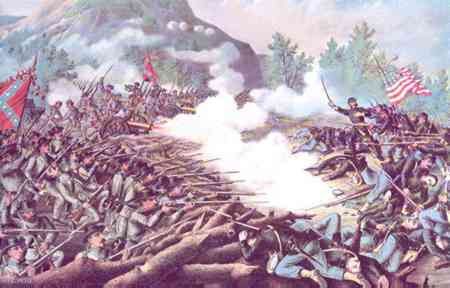 In early December 1861, Union forces were spotted by Confederate scouts encamped in the area of Roanoke. General Jackson with the reorganised Army of Virginia were ordered to march from Richmond to engage the enemy. An interesting fact about this battle was that it actually took place in and around the village of 'Big Lick' (now renamed Roanoke) however many historians and reporters of the era decided that 'The Battle of Big Lick' didn't really have the same flair as 'The Battle of Roanoke' and thus took the name from the river rather than the village which had been founded near it.  Whatever the name of the battlefield, the men who fought and died upon it would hardly have cared as, despite being numerically outnumbered, Union forces managed to put up a good fight before being overrun by Jacksons men, leading him to comment "These men may be lead by tyrants, but they fight like lions."  Roanoke was to be the only battle of December, as forces on both sides licked their wounds and reorganised themselves, ready for spring and summer campaigns. Deep wounds they were too, with an estimated 44,106 men killed on the Confederate side, and 67,565 lost on the Union side. In five short months, more Americans had died in battle than in the entire eight years of the War of Independence. So, as the year of 1861, a year that would be forever ingrained in the hearts and minds of the American people, came to a close the Confederacy continued to hold strong in the east, repelling Union attacks and retaking territory lost in the initial thrusts by Sheridan and Grant. However, Sherman flank to the west was causing deep concerns amongst the Confederate leadership and would soon have to be dealt with if the gains in the east were not to be undermined by losses in the west.  Authors note: Is Sherman starting his march to the sea three years too early? 
Last edited by Oberon; 05-13-15 at 07:21 PM. |

|

|
 05-13-15, 05:04 PM
05-13-15, 05:04 PM
|
#12 |
|
Lucky Jack
 |
Holding the Center
January - March 1862  Shermans march through Arkansas As 1862 opened, it was decided in a meeting between the three main generals of the Confederacy that Shermans march through the western states had to be stopped if it was not to undermine the progress that had been made in the east. As such, Generals Jackson, Stuart and newcomer Rand McLaws were sent with a total of just over 62,000 men westward to Nashville and Tuscaloosa in order to prepare. Lee and his 37,000 men stayed in the east in order to retake the regions already taken by the Union and to counter Grants inevitable attempts to make further gains albeit with fewer forces after the recent Confederate successes.  However, a new concern was being raised in the Confederate capital of Richmond, and that was the shrinking budget which despite the best attempts of the men who knew the ins and outs of finances, would just not lift out of its negative spiral towards the red. It was with a heavy heart and much cussing of the damyankees and their blockade that Christopher Memminger, the Secretary of the Treasury, authorised the acquisition of several loans in order to assist with the war effort. It was hoped that the number and size of the loans would only be small since, so far, the war was balanced slightly in the Confederacies favour, however no-one could be sure exactly how the next year would pan out. The Second Battle of Fredericksburg  The First New Jersey Brigade charges the Confederate lines In late January 1862, Grant moved south again pulling with him men of the Washington garrison after being driven out of Virginia by the combined forces of Lee, Jackson and Stuart last year. Hoping, perhaps, to take advantage of Jackson and Stuart redeploying westward and Lee focusing on retaking lost territory he moved fast and started capturing Fredericksburg. However, Lee decided to split his forces after he successfully retook Staunton, sending 14,000 north-east to Manassas and taking 23,000 with him to Fredericksburg to attack Grant.  Battle commenced on the evening of the 2nd of Feburary 1862, with Grants forces initially having the upper hand due to having dug in whilst waiting for the inevitable attack. However the difference in size between the forces soon took its toll and despite some brave efforts on the behalf of the New Jersey brigade to try and break through Lees lines, the Union forces collapsed completely and by the 19th Feburary the Washington Garrison had been all but annihilated with minimal losses to the Confederate forces.  Meanwhile in Europe, more chaos was unfolding as France and Prussia, with its Germanic state allies, went to war with each other.  This was good and bad news for the Confederacy, good in that it was unlikely that the French would now seek to work with the Union against them, but bad in that it also made it more unlikely that Great Britain would join their side whilst such uncertainty ruled in Western Europe. In the beginning of March, whilst the 14,000 men that split from Lees force continued to occupy Manassas Lee moved through to Staunton where a small Union force was attempting to force its way into Virginia, it was composed primarily of artillery and was quickly swept aside in a battle that lasted no more than a day.  Lee then pushed forward into Roanoke where another 8,000 Union forces awaited him. The forces in Roanoke put up a much larger fight than those in Staunton however the outcome was still the same. Lees much larger force drove them from the field with high casualties on the 22nd March 1862.  Meanwhile in the west, Shermans forces moved into Okmulgee while Stuart and Jackson prepared to march and do battle with him. It was estimated that Stuart would arrive first on the 25th March and Jackson would arrive shortly after on the 5th April. Shermans forces had reinforced to 43,000 men, so it was clear that a titanic battle awaited them. 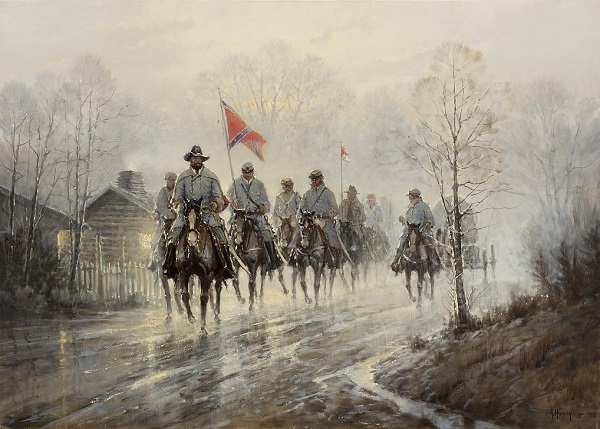 General J.E.B. Stuart marching through western Arkansas to do battle with Sherman. |

|

|
 05-13-15, 05:39 PM
05-13-15, 05:39 PM
|
#13 |
|
Lucky Jack
 |
In the Balance
March - June 1862 When Stuart and Jackson arrived in Okmulgee they found only burning farmsteads and civilians pointing north-west to Oklahoma city. With a fierce determination in their eyes, they turned and marched towards Sherman. Battle of Oklahoma City 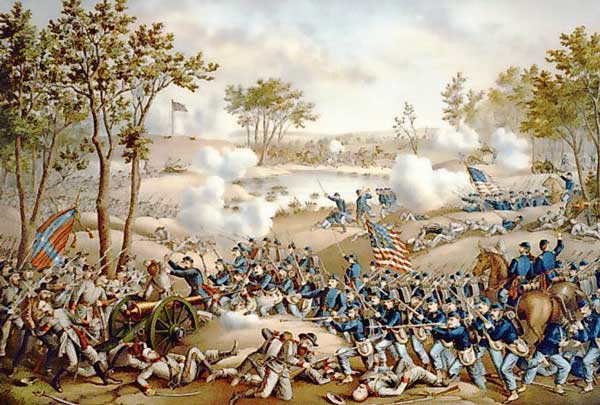 General Sumners II corps attempts to steal General Alexanders cannons. Stuarts forces were the first to arrive in Oklahoma city on the 2nd of April 1862, meeting to their surprise Lees old adversary Ulysses S. Grant, rather than Sherman as they had been expecting.  The battle was long and it was bloody. It has been quoted by historians as being one of the pivotal clashes of the civil war. Initially outnumbered, Stuarts forces took a mauling from Grants infantry, being outmanoeuvred in the flanks and out-gunned by Union artillery. However, on the 12th April, Jackson arrived, unquestionably saving Stuarts forces from certain defeat and turning the tide of the battle decisively. This did nothing to lessen the Confederacies casualties however, in the biggest clash of arms the war had seen so far, and whilst they finally managed to drive Grants forces off the field on the 2nd of June 1862, it was a great cost of manpower, an almost pyrrhic victory which left Jackson and Stuarts forces shattered, but Grant once again forced to flee with a destroyed force.  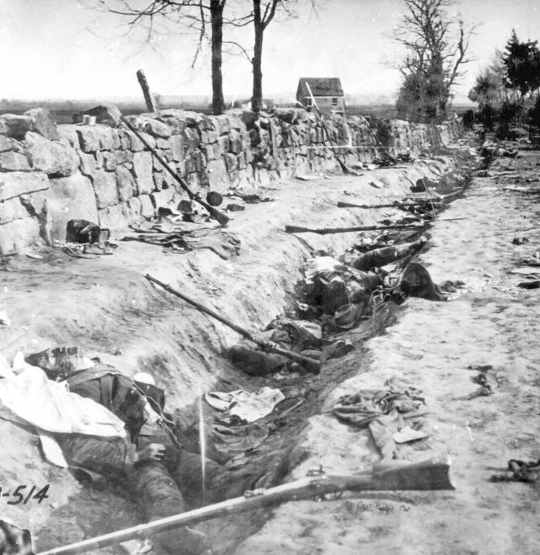 Bodies lying where they'd fallen in Oklahoma city, it took over a month to bury all the men who had been killed. When news of the victory at Oklahoma city reached Lee in Roanoke, he was alledged to have gone ashen-grey and whispered "A few more victories like that and we'll lose this war." It was perhaps his urge to reduce casualties and bring the war to a swift end which lead to his next decision. On the 4th June 1862, Lee brought his generals around him in a tent and announced his decision to march on Washington D.C. in the morning. Last edited by Oberon; 05-13-15 at 05:48 PM. |

|

|
 05-13-15, 06:43 PM
05-13-15, 06:43 PM
|
#14 |
|
Lucky Jack
 |
To The Death
June - August 1862  The Battle of Sadowa, a brief victory for the Prussian forces in an otherwise disastrous war. The fires of war flickered through Europe, with Prussia facing a two front war from France and from Austria.   Although Britains war in Kalat had ended recently, with Kalat opening its borders to British forces, it wasn't expected by the diplomats in London that Britain would join forces with the Confederacy this year, and it was hoped when President Davis read of Lees plans to march on Washington that they would be able to force peace with the Union before 1863, whilst the odds were still in their favour. With Stuart and Jacksons force bled white in Oklahoma, General Rand McLaws was brought back to the east and given the men who had split off from Lees army before the second battle of Fredericksburg. He was told to march westward and meet up with Stuart and Jackson and retake the territory that Sherman and then Grant had taken as well as do battle with any Union forces that were attempting to capture territory in the area.   The meagre defences of the Union capital await Lees arrival On the 4th July 1862, no doubt with the date in mind, General Lee arrived in Washington D.C. with 27,000 men behind him. The Union fleet quickly set sail before they could be captured, and with the Washington Garrison destroyed in the second battle of Fredericksburg, there was little but time to impede Lee as he set about capturing the capital city of the Union. Many in Lees command wanted to burn the city to the ground as a symbol of Confederate power, but Lee ordered that any man who tried such an act would be shot as a traitor. Tempting as it was, he did not want to repeat the indignity that had been visited upon the city by the British only fifty years before. On August 3rd, McLaws met Jackson and Stuart in Vicksburg, with Jackson 'Army of Virginia' now refreshed to 49,000 men, they marched north into Memphis where a Union force of 12,000 men was attempting to capture territory. The Union force declined battle and retreated north back across Union lines, faced with the likelihood that this same force would likely travel east and cross into Confederate territory again, Jackson told Stuart to head west and retake the lost territory that Sherman and Grant had taken, while he would ride north and tackle the Union forces.  The Battle of Paducah  General Grant inspiring his men to fight at Paducah. The battle at Paducah in Kentucky marked the first major clash on Union soil since the wars start, Jackson brought his forces to bear against, unsurprisingly, General Ulysses S. Grant, who was determined that this time he would triumph. The odds were initially in Grants favour, he had artillery, lots of artillery and his men were rested and fresh, even if he wasn't. Jackson meanwhile had a compliation of survivors of Oklahoma City and fresh recruits from the east. He may have outnumbered Grant, but the battle was not necessarily going to be easy.  The battle of Paducah was another pyrrhic Confederate victory, although Grants cavalry and infantry were spread thin, his cannons took a grave toll on Confederate forces as they pushed through the Union lines. Finally on the 27th August 1862 Grant was forced again into retreat as his cannon line faltered. Jackson chose not to pursue but to turn westward again to retake captured territory alongside Stuart.  However, before Jackson could begin his march, two messages arrived, one soon after the other. The first brought news that Lee had successfully captured Washington D.C. but the second was of much greater consequence. Diplomats from the Confederacy had received word from the diplomats from the Union that the Union forces would be willing to sign a cease fire and acknowledge the existence of the Confederacy.  The war was over!! |

|

|
 05-13-15, 07:15 PM
05-13-15, 07:15 PM
|
#15 |
|
Lucky Jack
 |
Counting the Cost
September 1862  Generals Lee and Grant meeting to discuss prisoner exchanges after the signing of the Treaty of Washington. The Treaty of Washington, signed by Lincoln and Davis in the White House on the 28th August 1862 saw the United States of America grant recognition to the Confederate States of America. With Lees men outside eyeing Lincolns security force it was a tense moment, but when the two men shook hands there was a ripple of applause outside as both sides put down their weapons. This is not to say that the peace was easy, there were still ripples of violence along the Mason-Dixon line as disgruntled members of both sides refused to believe that the war was over. However, for the main forces of the Union and the Confederacy, peace had been won, a scant twelve months after the first outbreak of war. But what a bloody twelve months they had been. It was estimated that some 102,258 men had died fighting for the Confederates and 126,399 for the Union, a total of 228,657 American lives lost in the battles of the civil war. The Confederate economy was in tatters, but there was light at the end of the tunnel. Now that the war was over, diplomats from London were reportedly more favourable to the idea of an alliance than before, and when the order was given to demobilise on the 1st September 1862 it was hoped that soon the Confederate economy would be back on its feet and the national debt of £11k would soon be able to be paid off. On the 5th September 1862, President Davis arrived at Fredericksburg by train, the landscape around the station still showed the signs of war, and many of the buildings around Fredericksburg itself were still scorched remnants, but the signs of life were returning, with recently demobbed soldiers putting down their rifles and taking up a woodsaw to help rebuild the ruined cities of the nation. Davis took a walk through the town, and then in the center of town, he stood upon a specially made stage and there he gave the Second American Declaration of Independence, or the Fredericksburg Address as it became known.  The crowd at Fredericksburg waiting to hear President Davis's speech. 
|

|

|
 |
| Tags |
| victoria ii ; dixie land |
|
|
